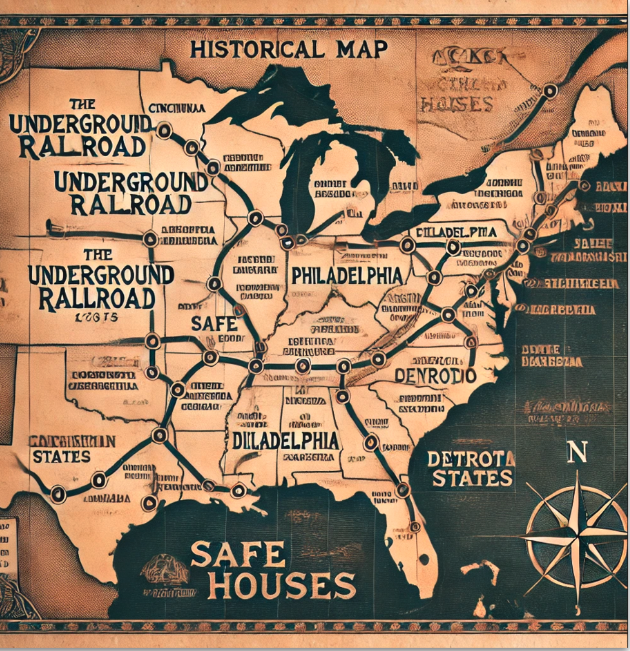
The Importance of AI Literacy for Teachers and Students
Jun. 10, 2025
As artificial intelligence (AI) becomes increasingly ubiquitous in our daily lives, teachers must invent ways to improve AI literacy for their students...and their fellow educators. Tom Hammond, associate professor and program director for Teaching, Learning and Technology (TLT), says prioritizing human intelligence, the “human in the loop,” is key to reaping the benefits of AI technology and minimizing the risks of erroneous results.
Hammond gives the following example that illustrates the importance of understanding how AI works, how it can benefit us, and how it falls short.
Imagine you are a sixth grade student who has just been assigned a report on the life of Lenape Peoples during the pre-contact period. You open an online AI tool such as ChatGPT on your phone and type in, “Draw a picture of a Lenape village on the banks of the Delaware River in 1400.”
The drawing that is created in response to your inquiry might look something like this:

“There's no primary source image contributing to this drawing, no reference painting,” Hammond explained. “But if you're an elementary social studies teacher, you would be eagerly pointing at the screen saying, ‘Hold up! Do you see what’s wrong with this picture?’”
The generated image depicts tipi dwellings. The Lenape lived in wigwams and longhouses during this time. The canoes and the planted crops are also inaccurate. “The representations of material culture and ways of life are incorrect, and even an elementary student should be able spot the errors,” he continued. “AI is very good at producing misinformation, but this also creates an opportunity for students to understand the current limitations of AI, as well as its challenges to both individual and collective knowledge.”
Our popular understandings of Indigenous history and culture are generally filled with errors and are heavily influenced by representations in media. Hammond fears that overreliance on AI will exacerbate inaccuracies — not just about Lenape history — but many subjects. The question for teachers is how to not just surface these issues with their students but also use this as an opportunity to teach students about AI.
Next, imagine you’re a teacher preparing a lesson on the Underground Railroad. You would like to include a map outlining the routes enslaved people followed to freedom.
Below is an example of a map generated in response to the prompt, “Draw a map of the Underground Railroad route:”

The result is a recognizable map in the United States with the label, “Underground Railroad.” However, place names are wildly inaccurate. Hammond asked, “What happens when the next generation of students who have grown up in a world filled with AI slop, are unable to distinguish between what is accurate and inaccurate, high quality and low quality information?”
AI literacy has become a necessity, not a luxury, and its importance will only grow moving forward. Hammond invites teachers and students to think about, engage with, and try to hang onto a critical filter. “Yes, AI is amazing, but we must not overvalue the final products,” he said. “AI doesn't actually know anything; its outputs are the results of calculated probabilities.”
This past spring, Hammond and doctoral student Erin Quilinquin met with Bethlehem Area High School teachers through a workshop series on AI for teaching social studies. Hosted monthly, the after school Zoom sessions provided a space for teachers to work on their ideas of how to effectively use AI in their classrooms. Some of the strategies that came out of these discussions have already made their way into classrooms, others are still in development.
Hammond notes there are the implications of this work for all school districts. “We have the resources to do this already,” he said. “Every district has people on staff who can and will be doing these things independently, it's just a question of creating the conversation and creating some focus for them to think and share what they’ve observed for teaching AI literacy.”
Upcoming opportunities to learn more about Ai Literacy in education include the COE’s Certificate in Artificial Intelligence & Learning Analytics. TLT faculty member Zilong Pan will also teach a special topic this fall: TLT 394, Emerging Technology in STEM Education.


